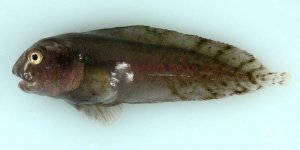| News / Science News |
Bacteria Used to Create Fertilizer Out of Thin Air
New research by Washington University in St. Louis scientists show that it might soon be possible to engineer plants to develop their own fertilizer. This discovery could have a revolutionary effect on agriculture and the health of the planet.

Fertiliser application to Oil Seed Rape. ![]()
Creating fertilizer is energy intensive, and the process produces greenhouse gases that are a major driver of climate change. And it's inefficient. Fertilizing is a delivery system for nitrogen, which plants use to create chlorophyll for photosynthesis, but less than 40 percent of the nitrogen in commercial fertilizer makes it to the plant.
After a plant has been fertilized, there is another problem: runoff. Fertilizer washed away by rain winds up in streams, rivers, bays and lakes, feeding algae that can grow out of control, blocking sunlight and killing plant and animal life below.
However, there is another abundant source of nitrogen all around us. The Earth's atmosphere is about 78 percent nitrogen, and the Pakrasi lab in the Department of Biology just engineered a bacterium that can make use of that atmospheric gas—a process known as "fixing" nitrogen—in a significant step toward engineering plants that can do the same.
The research was rooted in the fact that, although there are no plants that can fix nitrogen from the air, there is a subset of cyanobacteria (bacteria that photosynthesize like plants) that is able to do so. Cyanobacteria can do this even though oxygen, a byproduct of photosynthesis, interferes with the process of nitrogen fixation.
The bacteria used in this research, Cyanothece, is able to fix nitrogen because of something it has in common with people.
Cyanobacteria are the only bacteria that have a circadian rhythm. Cyanothece photosynthesize during the day, converting sunlight to the chemical energy they use as fuel, and fix nitrogen at night, after removing most of the oxygen created during photosynthesis through respiration.
The research team wanted to take the genes from Cyanothece, responsible for this day-night mechanism, and put them into another type of cyanobacteria, Synechocystis, to coax this bug into fixing nitrogen from the air, too.
With just 24 of the Cyanothece genes, Synechocystis was able to fix nitrogen at a rate of more than 30 percent of Cyanothece.
Nitrogen fixation rates dropped markedly with the addition of a little oxygen (up to 1 percent), but rose again with the addition of a different group of genes from Cyanothece, although it did not reach rates as high as without the presence of oxygen.
The next steps for the team are to dig deeper into the details of the process, perhaps narrow down even further the subset of genes necessary for nitrogen fixation, and collaborate with other plant scientists to apply the lessons learned from this study to the next level: nitrogen-fixing plants. (Tasnim News Agency)
YOU MAY ALSO LIKE



